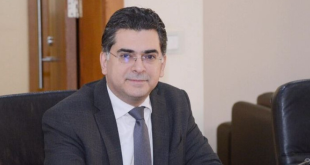‘There is an awareness among the entire population about what to do in the event of an impending disaster. And there is a respect for natural hazards’
The strongest typhoon to hit Japan in more than 25 years has left a trail of destruction across the country, shutting down a major international airport and sending cars, roofs and anything else that wasn’t nailed down flying.
Yet despite the chaotic scenes, as Typhoon Jebi moved away off the west coast and winds of up to 100mph died down, Japanese officials counted no more than 11 dead and 600 injured.
One Briton on holiday in Japan, Natalie Lovett, summed it up with an Instagram post from downtown Osaka – among the worst-hit cities – on Wednesday night. “Hard to believe this is where Typhoon Jebi hit,” she wrote. “Smashed cars and debris but still the feeling that this could have been so much worse.”
Built to survive
Japan sits on both the Pacific typhoon belt and the seismic Ring of Fire, meaning it receives far more than its fair share of extreme natural events of all kinds.
Whether by earthquakes, tsunamis, typhoons or volcanic eruptions, whole swathes of Japan’s major cities have been destroyed and rebuilt in the 20th century alone.
That has provided the opportunity to plan and prepare for future events, and huge sums have been invested in building infrastructure to survive everything nature throws at it.
“Japan really are the world leaders in both emergency preparedness and response, and in ensuring that infrastructure and assets are resilient when they are constructed,” said Marc Forni, the leading expert in disaster risk management at the World Bank.
Roads and public buildings in coastal cities like Osaka are designed to allow excess water and rainfall to flow away efficiently, and advanced coastal defences can reduce the risk of a storm surge.
Perhaps most importantly, the construction of private buildings is strictly regulated to adhere at all times to best practices, with natural disasters in mind.
“The building code, and the enforcement of the building code most importantly, is really state of the art,” Mr Forni said.
Awareness from a young age
On 1 September 1923, an earthquake measuring 7.9-magnitude struck Japan’s Kanto Plain, levelling the nearby cities of Tokyo and Yokohama. At least 100,000 people were killed, and the devastation was reportedly so complete that the government considered moving the capital.
That date, 1 September, is now marked as national Disaster Prevention Day in all of Japan’s schools and public offices. Children go through drills on what to do when a major natural event strikes, and learn about their country’s disaster-ridden history.
It is a grassroots approach that has made disaster preparedness an enduring national priority, said Mr Forni.
“There is an awareness among the entire population about what to do in the event of an impending disaster,” he said, “and there is a respect for natural hazards”.
“Working through the education system, it has become part of the identity of Japanese students – to know how to respond. All the exercises and drills create a cohesiveness that is needed for a stronger response [when disasters do happen].”
Before Typhoon Jebi struck, Japan issued more than 1.2 million evacuation notices, none of which were mandatory. Nonetheless, interviews on national broadcaster NHK showed most were happy to comply. ”Our house is right at the base of a mountain,” one woman told the TV station. ”It’s a little dangerous, so we decided to leave.”
A lesson to others?
Beyond public awareness and building codes, Japan’s government also sets an example to the world of how different ministries and jurisdictions work together in the event of a disaster.
But officials have also invested time and effort in preparing agreements with the private sector so that, before the first winds or raindrops even hit, private companies that could help out with the disaster response know what their responsibilities are.
“It takes a lot of institutional strength and time and effort to be able to build those types of contingent agreements and really focussing on this as a national priority has really borne fruit,” Mr Forni said.
While it is impossible to know, the chances are that far worse impacts would have been felt by a typhoon of Jebi’s scale hitting any other built-up coastal region in the world.
“Japan proves time and again that when a natural hazard strikes a location it doesn’t have to lead to major loss of life or economic assets,” Mr Forni said. “By investing in engineering design and the enforcement of codes and standards, it shows the impact really can be quite limited compared to [what it would be in] most other countries in the world.”
The Independent
 Lebanese Ministry of Information
Lebanese Ministry of Information



